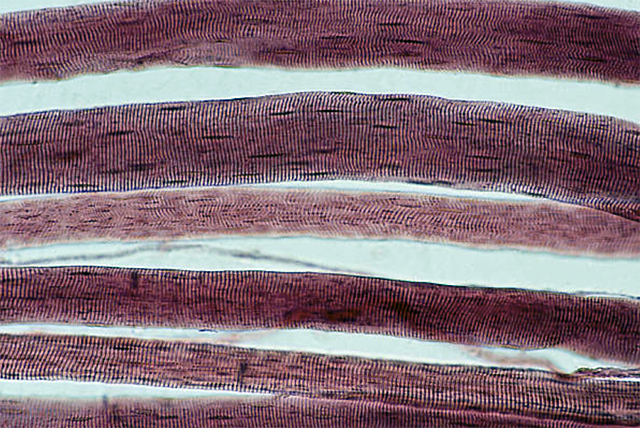
Muscular dystrophy lab creates new gene therapy system
The approach makes it possible to introduce much larger genes into cells than current gene therapy techniques.
Researchers have developed a gene delivery system that makes it possible to introduce far larger genes into cells than current methods.
Nick Whitehead, a research associate professor of physiology & biophysics at the University of Washington School of Medicine, developed the new technique with Stan Froehner, whose lab has been researching the genetic disorder Duchenne muscular dystrophy and related muscular disorders for more than three decades. Froehner is a professor of physiology and biophysics at the UW medical school.
“We’re currently focused on using the approach to treat Duchenne muscular dystrophy,” Whitehead said, “but this is a platform that could be used for any gene important for skeletal and cardiac muscle function, so there’s the potential that it could be used to treat other genetic diseases.”
Duchenne muscular dystrophy is caused by mutations in a gene for a muscle protein called dystrophin. The exact role dystrophin plays in the muscle is debated, but its loss causes muscle cells to die. Their demise leads to progressive muscle loss.
The disease affects about 1 in 5,000 males, while females are rarely affected. This is because, unlike most genes, of which we inherit two copies, one from our mother and one from our father, the gene for dystrophin is found on the X chromosome, which males inherit from their mothers. The Y chromosome, which they inherit from their fathers, doesn't contain this gene. As a result, if the mother passes along a dystrophin gene with a deleterious mutation there would be no copy from the father to compensate for the lost ability to make the protein. Diseases that are inherited through the X chromosome are called X-linked.
Children with Duchenne usually show signs of muscle weakness by age 2 or 3 years. They become progressively weaker so that by age10 or 12 most need to use a wheelchair. In the past, most died in their early 20s due to a failure of the respiratory muscles. Now with advances in respiratory support they live about a decade longer. But since the heart muscle is also affected, many will eventually die of cardiac failure.
“It’s a terrible disease,” says Froehner. “It goes on for 20 years, affecting not only the patient but his whole family, for the need to care for the boy can be overwhelming.”
The goal of gene therapy is to insert a normal gene into cells so they can produce the needed protein. A number of gene therapies have been developed to treat muscular dystrophies, but they have met with limited success. One major obstacle is that the dystrophin gene is one of the longest in the human genome. the gene is about 14,000 DNA bases long, far too large for current gene delivery approaches. For example, viral systems, in which genes are packed inside altered viruses that are then used to insert genes into cells, can only deliver genes about a third as long.
To get around this problem, researchers have attempted to insert truncated versions of the dystrophin gene. But Whitehead and Froehner think that, because dystrophin interacts with so many proteins along its long length, the entire or at least a substantial portion of the gene needs to be inserted to fully restore the protein’s function.
To do this, they put into service a protein that routinely shuttles back and forth from the interior of muscle cells to their surface membranes. The protein, called glucose transporter protein type-4 (GLUT4), which is found predominately on muscle, heart and fat cells, facilitates the movement of glucose into the cell.
Most of the time, GLUT4 is stored within the cell. It is encapsulated within membrane-bound bodies called endosomes. But in response to insulin, these bodies move to the cell’s surface to allow GLUT4 to incorporate into the membrane. There GLUT4 helps transport glucose across the membrane into the cells. When insulin levels fall, GLUT4 is again packed in endosomes, which move back into the cell’s interior.
To take advantage of this natural process, Whitehead and Froehner have linked the dystrophin gene to an antibody that binds to GLUT4 when it is on the cell surface. As a result, when GLUT4 moves back into the cell, the gene is pulled into the cell as well. Once inside the cell, the gene is able to escape from the endosome and enter the cell’s nucleus where the cell can use the genetic instructions encoded in the gene to make dystrophin.
“We’ve shown that we can inject this platform into a mouse and induce expression of the dystrophin gene in a range of muscles and improve function,” said Whitehead. “What we’re working on now is finding ways to optimize the platform so expression is as high as possible."
But even low amounts of full-length dystrophin could have substantial benefit, he added, citing a recent study showing that people with a milder form of dystrophy who produced dystrophin levels 0.5% or less of normal have much better muscle function than those who had none.
Based on this novel gene therapy approach, Whitehead and Froehner founded Myosana Therapeutics. The company will use their preclinical studies conducted at the UW School of Medicine for clinical development of a treatment for Duchenne muscular dystrophy and potentially other muscle diseases.
Written by Michael McCarthy
For details about UW Medicine, please visit https://uwmedicine.org/about.
Tags:gene therapy